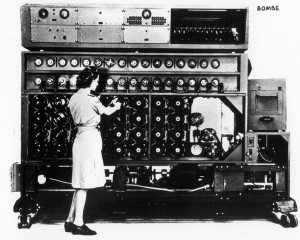 In light of upcoming summer vacation plans, I want to look at how technology works behind the scenes to keep us safe and comfortable as we travel. Recently I was on a plane and, as I often do, I looked in the cockpit at the instruments. I was amazed at the array of gauges and computer screens available to the pilots. How far have we come in the last 100 years in terms of technology in a plane? Is it better for the pilot? Is it safer for the passengers?
In light of upcoming summer vacation plans, I want to look at how technology works behind the scenes to keep us safe and comfortable as we travel. Recently I was on a plane and, as I often do, I looked in the cockpit at the instruments. I was amazed at the array of gauges and computer screens available to the pilots. How far have we come in the last 100 years in terms of technology in a plane? Is it better for the pilot? Is it safer for the passengers?
Electronic Flight Bag
My son is taking flying lessons and his flight bag seems to get heavier by the day. Every pilot takes a similar bag into the cockpit and it carries flight maps, aircraft operating manuals, and other documentation. Fortunately, an electronic flight bag has been developed that allows pilots to download maps and other useful information to a tablet. The iPad seems to be the tablet of choice for pilots and can be updated at airports or real time through wireless 4G. They can also hold apps such as weather maps, FAA updates, and GPS navigation aids. Such technology makes critical information much more accessible to the pilot.
Passenger Entertainment
There are many networked systems running in a plane, including the navigation systems, the point-of-sales systems for purchased food and beverages, and the passenger entertainment systems. On top of that, wi-fi has been added to many flights. It is a miracle that it all works and is a testament to good systems architecture and a robust network. I flew overseas last year and the plane had a seatback entertainment system with what appeared to be an endless array of music and movie choices. More recently I flew with a small airline that rented tablets connected wirelessly to an on-board server, with movies and in-flight entertainment. The options continue to grow as airlines try to differentiate themselves and become more sophisticated in their technology offerings.
Who’s Flying the Plane?
I read about the advent of driverless cars, but will we see a pilotless passenger plane anytime soon? Drones are available now that can take payloads that range from cameras to missiles. Passenger planes have autopilot, which can be used once the plane is in the air, but a human still takes off and lands. In a recent article, experts speculated on future technology that could possibly push pilots out of the cockpit. This debate has intensified since a German pilot deliberately crashed an Airbus A320 into a mountain last month. Completely remote aircraft management is being researched. In fact, remote control airports are already in use in Sweden and are being considered in other locations. The question I ask myself is do I trust the plane to a pilot or a programmer?
Thoughts
If your travels take you on a plane this summer, I hope you will appreciate the technological changes that have come to the airline industry, both for your safety and comfort and to help those charged with getting you safely to your destination.
Kelly Brown is an IT professional and assistant professor of practice for the UO Applied Information Management Master’s Degree Program. He writes about IT and business topics that keep him up at night.




